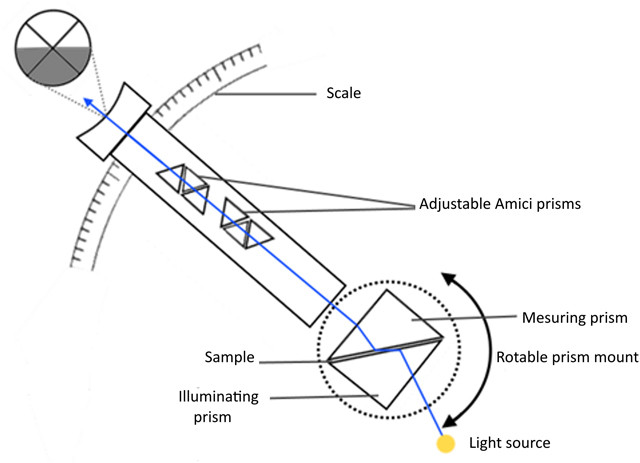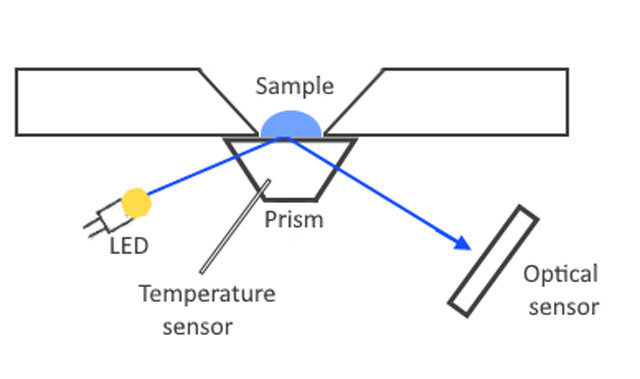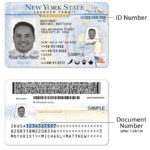When A Light Beam Is Traveling Through An Unknown Substance, its behavior can reveal a lot about the substance itself. At SIXT.VN, we help travelers explore Vietnam with ease, and understanding the properties of light can illuminate your journey in unexpected ways. Discover the wonders of Vietnam with seamless travel solutions. Our services include airport transfers, hotel bookings, sightseeing tours, and reliable transportation across Hanoi and beyond, ensuring a smooth and enriching experience.
Contents
- 1. What Happens When A Light Beam Enters an Unknown Substance?
- 1.1. How Does Refraction Occur?
- 1.2. What is the Refractive Index?
- 1.3. What is Snell’s Law and Its Role?
- 1.4. What is the Critical Angle?
- 1.5. How Does Temperature and Wavelength Affect Refractive Index?
- 2. How Can a Refractometer Help Analyze Unknown Substances?
- 2.1. What is a Refractometer?
- 2.2. How Do You Use a Refractometer?
- 2.3. How Does a Refractometer Determine Specific Gravity?
- 2.4. What is the Brix Scale?
- 2.5. What are Other Scales Used in Refractometry?
- 3. What Are the Different Types of Refractometers?
- 3.1. What is an Abbe Refractometer?
- 3.2. What are Traditional Handheld Refractometers?
- 3.3. What are Digital Refractometers?
- 3.4. What are Specialized Refractometers?
- 3.5. What is a Brix Refractometer?
- 3.6. What is a Salinity Refractometer?
- 4. What Are the Applications of Refractometry in the Food Industry?
- 4.1. How is Refractometry Used in Agriculture?
- 4.2. How is Refractometry Used in Winemaking?
- 4.3. How is Refractometry Used in the Livestock Industry?
- 4.4. How is Refractometry Used in Beekeeping?
- 4.5. How is Refractometry Used in Food Processing?
- 4.6. How Does Refractometry Help Detect Food Fraud?
- 5. What Are the Benefits of Using Refractometry?
- 5.1. What Are the Advantages of High Sample Throughput?
- 5.2. Why is Low Sample Volume Important?
- 5.3. How Does Refractometry Ensure Quality Control?
- 5.4. How is Refractometry Easy to Handle and Operate?
- 5.5. Why is Simple Cleaning a Benefit?
- 6. What Are the Limitations of Using Refractometry?
- 6.1. How Does Temperature Affect Refractometry?
- 6.2. How Do Multiple Solutes Affect Accuracy?
- 6.3. When Should Additional Testing Be Considered?
- 7. How Does SIXT.VN Enhance Your Travel Experience in Vietnam?
- 7.1. What Airport Transfer Services Does SIXT.VN Offer?
- 7.2. What Hotel Booking Services Does SIXT.VN Offer?
- 7.3. What Sightseeing Tours Does SIXT.VN Offer?
- 7.4. How Does SIXT.VN Ensure Reliable Transportation?
- 7.5. How Does SIXT.VN Provide a Seamless Travel Experience?
- 8. How Can You Book Services with SIXT.VN?
- 8.1. What is the Process for Booking Airport Transfers?
- 8.2. How Can You Book Hotel Accommodations?
- 8.3. How Can You Arrange Sightseeing Tours?
- 8.4. How Can You Contact SIXT.VN Customer Service?
- 9. Why Choose SIXT.VN for Your Vietnam Travel Needs?
- 9.1. What Makes SIXT.VN a Reliable Travel Partner?
- 9.2. How Does SIXT.VN Provide Expert Travel Guidance?
- 9.3. What is SIXT.VN’s Commitment to Customer Satisfaction?
- 9.4. How Does SIXT.VN Ensure a Hassle-Free Experience?
- 9.5. How Does SIXT.VN Enhance Your Vietnam Travel Experience?
- 10. What Are Some FAQs About Light and Substance Interaction?
- 10.1. What Determines the Color of a Substance?
- 10.2. What is the Difference Between Reflection and Refraction?
- 10.3. How Does a Prism Work?
- 10.4. What is the Electromagnetic Spectrum?
- 10.5. What is Fluorescence?
- 10.6. What is Phosphorescence?
- 10.7. How Do Polarized Lenses Work?
- 10.8. What is the Doppler Effect?
- 10.9. What is Interference of Light?
- 10.10. What is Diffraction of Light?
- Call to Action
1. What Happens When A Light Beam Enters an Unknown Substance?
When a light beam enters an unknown substance, it changes speed and direction depending on the substance’s refractive index. According to research from Cambridge University Press, in 1999, light’s behavior when it hits different mediums provides valuable insights. This bending and slowing of light, known as refraction, is a key principle used in devices like refractometers to identify and analyze materials. With SIXT.VN, you can experience the beauty of Vietnam without the stress of travel logistics.
1.1. How Does Refraction Occur?
Refraction occurs because light travels at different speeds in different mediums. When light moves from air into water, for example, it slows down, causing it to bend. This bending is predictable and depends on the angle at which the light hits the surface and the refractive indices of the two substances.
1.2. What is the Refractive Index?
The refractive index is a measure of how much light slows down when passing through a substance. A higher refractive index means the light slows down more. This property is unique to each substance and can be used to identify it. Refractive index (n) = (Speed of light in a vacuum) / (Speed of light in the test substance).
 Diagram indicating the path of light during refraction and indicating the key parameters of interest for calculating the refractive index.
Diagram indicating the path of light during refraction and indicating the key parameters of interest for calculating the refractive index.
Figure 1: Light refraction at the interface between medium A and medium B.
1.3. What is Snell’s Law and Its Role?
Snell’s Law describes the relationship between the angles of incidence and refraction when light passes between two different media. It states that the ratio of the sines of the angles is equal to the ratio of the refractive indices.
Equation 2: Snell’s law formula.
sinθA / sinθB = nB / nA = VA / VB
This law allows scientists to calculate the refractive index of a substance by measuring the angles of incidence and refraction.
1.4. What is the Critical Angle?
The critical angle is the angle of incidence at which light is refracted at an angle of 90 degrees. Beyond this angle, total internal reflection occurs, meaning all light is reflected back into the substance. This principle is used in many optical devices.
1.5. How Does Temperature and Wavelength Affect Refractive Index?
The refractive index of a substance can change with temperature and the wavelength of light used. Higher temperatures usually decrease the refractive index, while shorter wavelengths of light (like blue light) result in a higher refractive index. These factors must be controlled or compensated for accurate measurements.
2. How Can a Refractometer Help Analyze Unknown Substances?
A refractometer measures the refractive index of a substance, providing valuable information about its composition and purity. A refractometer is helpful for testing the sugar content of fruit for the food industry, according to research from the Journal of Food Composition and Analysis, in 2001, as refractometers provide accurate information. SIXT.VN ensures your journey through Vietnam is smooth and insightful, just like the precise measurements of a refractometer.
2.1. What is a Refractometer?
A refractometer is an instrument used to measure the refractive index of liquids and solids. It works by shining a light beam through the substance and measuring the angle of refraction.
2.2. How Do You Use a Refractometer?
Using a refractometer involves placing a few drops of the substance on the prism, closing the cover, and looking through the eyepiece to read the refractive index on the scale. Digital refractometers provide direct readings on a screen.
2.3. How Does a Refractometer Determine Specific Gravity?
Specific gravity, or relative density, is the ratio of the density of a substance to the density of water. Refractometers can indirectly determine specific gravity by correlating the refractive index to the density of the substance, especially in binary mixtures.
2.4. What is the Brix Scale?
The Brix scale measures the amount of dissolved solids, primarily sugar, in a liquid. It is widely used in the food and beverage industry to determine the sugar content of juices, wines, and other products. One degree Brix (°Bx) is equivalent to 1 gram of sucrose in 100 grams of solution.
2.5. What are Other Scales Used in Refractometry?
Other scales include Oechsle (used in winemaking), Plato (used in brewing), and Baumé (used in various industries to measure the density of liquids). Each scale is tailored to specific applications and industries.
3. What Are the Different Types of Refractometers?
Different types of refractometers cater to various needs, from laboratory precision to field convenience. The Abbe refractometer, named after Ernst Abbe, is reliable and accurate. According to research from the Journal of Chemical Education, in 1968, Abbe refractometers are versatile and easy to use. With SIXT.VN, finding the right travel solution is just as easy, ensuring a seamless and enjoyable experience.
3.1. What is an Abbe Refractometer?
The Abbe refractometer is a benchtop instrument used for high-precision measurements. It uses two prisms to measure the refractive index of liquids and solids and is known for its accuracy and reliability.
 Diagram showing the layout of an Abbe refractometer and the path of light.
Diagram showing the layout of an Abbe refractometer and the path of light.
Figure 2: Representation of an Abbe refractometer.
3.2. What are Traditional Handheld Refractometers?
Handheld refractometers are portable, analog instruments that provide quick and easy measurements. They are commonly used in the field for applications such as checking the ripeness of grapes or the sugar content of wort.
3.3. What are Digital Refractometers?
Digital refractometers use an LED light source and an image sensor to measure the refractive index, providing digital readouts. They offer advantages such as automatic temperature correction and adjustable scales.
 Diagram of the layout of a digital refractometer with the light path indicated.
Diagram of the layout of a digital refractometer with the light path indicated.
Figure 3: Representation of a digital refractometer.
3.4. What are Specialized Refractometers?
Specialized refractometers are designed for specific tasks, such as measuring Brix or salinity. They are calibrated and display units according to their intended use, making them easy to use for specific applications.
3.5. What is a Brix Refractometer?
A Brix refractometer is specifically designed to measure the sugar content of a solution using the Brix scale. It is commonly used in the food and beverage industry for quality control.
3.6. What is a Salinity Refractometer?
A salinity refractometer measures the concentration of salt in water. It is used in food processing, manufacturing, and aquaculture to control the salinity of solutions.
4. What Are the Applications of Refractometry in the Food Industry?
Refractometry plays a crucial role in the food industry, from monitoring crop growth to ensuring product quality. According to research from Academic Press, in 2014, refractometry is used to monitor harvest protocols. SIXT.VN helps you explore Vietnam’s culinary delights with ease, providing reliable transportation and travel solutions.
4.1. How is Refractometry Used in Agriculture?
In agriculture, refractometry is used to monitor crop growth, determine the ripeness of fruits and vegetables, and estimate production yields. This helps farmers determine the optimal harvest times.
4.2. How is Refractometry Used in Winemaking?
In winemaking, refractometry is used to assess the ripeness of grapes and determine the optimal harvest time. It is also used to monitor the sugar content during fermentation.
4.3. How is Refractometry Used in the Livestock Industry?
In the livestock industry, refractometry is used to evaluate the quality of milk and colostrum. This allows for quick assessment of nutritional parameters and detection of adulteration.
4.4. How is Refractometry Used in Beekeeping?
In beekeeping, refractometry is used to check the quality of honey and screen for product adulteration. This ensures that the honey meets quality standards.
4.5. How is Refractometry Used in Food Processing?
In food processing, refractometry is used for process monitoring and quality control. It is used to measure the total solids content in juices, yogurts, jams, and other products.
4.6. How Does Refractometry Help Detect Food Fraud?
Refractometry can help detect food fraud by identifying adulteration in products such as olive oil. By measuring the refractive index, it is possible to detect the presence of substituted oils.
5. What Are the Benefits of Using Refractometry?
Refractometry offers numerous benefits, including high sample throughput, low sample volume, ease of use, and simple cleaning. According to research from Food Chemistry X, in 2022, refractometry allows for quick and simple screening of food. SIXT.VN ensures your travel planning is just as efficient, providing seamless services for a stress-free trip.
5.1. What Are the Advantages of High Sample Throughput?
High sample throughput means that many samples can be quickly analyzed, making refractometry an efficient method for quality control in industries with large production volumes.
5.2. Why is Low Sample Volume Important?
Low sample volume is important because it reduces waste and allows for the analysis of small or precious samples. This is particularly useful in research and development.
5.3. How Does Refractometry Ensure Quality Control?
Refractometry ensures quality control by providing precise measurements of the refractive index, which can be used to determine the composition and purity of raw materials and final products.
5.4. How is Refractometry Easy to Handle and Operate?
Refractometers are designed to be user-friendly, with simple interfaces and straightforward procedures. This makes them accessible to a wide range of users, from field workers to lab technicians.
5.5. Why is Simple Cleaning a Benefit?
Simple cleaning is a benefit because it reduces downtime and ensures that the instrument remains accurate and reliable. This is important in industries where hygiene is critical.
6. What Are the Limitations of Using Refractometry?
While refractometry is a valuable technique, it has limitations. Factors like temperature and the presence of multiple solutes can affect accuracy. Consider additional testing when these limitations matter.
6.1. How Does Temperature Affect Refractometry?
Temperature significantly affects the refractive index of substances. Accurate measurements require temperature control or correction.
6.2. How Do Multiple Solutes Affect Accuracy?
When multiple solutes are present in a solution, the refractive index becomes a composite measurement, which may not accurately reflect the concentration of individual components.
6.3. When Should Additional Testing Be Considered?
Additional testing should be considered when high accuracy is required or when the sample contains multiple components that may interfere with the refractive index measurement.
7. How Does SIXT.VN Enhance Your Travel Experience in Vietnam?
SIXT.VN offers comprehensive travel solutions for exploring Vietnam, ensuring a seamless and enriching experience from arrival to departure. With reliable transportation, comfortable accommodations, and expertly guided tours, you can focus on enjoying the beauty and culture of Vietnam.
7.1. What Airport Transfer Services Does SIXT.VN Offer?
SIXT.VN provides reliable and comfortable airport transfer services, ensuring a smooth transition from the airport to your hotel. This eliminates the stress of finding transportation upon arrival.
Enjoy convenient and stress-free airport transfers with SIXT.VN.
7.2. What Hotel Booking Services Does SIXT.VN Offer?
SIXT.VN offers a wide range of hotel booking options, from budget-friendly accommodations to luxury resorts. This allows you to find the perfect place to stay based on your preferences and budget.
7.3. What Sightseeing Tours Does SIXT.VN Offer?
SIXT.VN organizes expertly guided sightseeing tours to popular destinations in Vietnam, including Hanoi, Ha Long Bay, and Sapa. These tours provide insightful experiences and ensure you don’t miss any key attractions.
7.4. How Does SIXT.VN Ensure Reliable Transportation?
SIXT.VN ensures reliable transportation through a fleet of well-maintained vehicles and professional drivers. This allows you to travel comfortably and safely throughout Vietnam.
7.5. How Does SIXT.VN Provide a Seamless Travel Experience?
SIXT.VN provides a seamless travel experience by offering a comprehensive suite of services, including airport transfers, hotel bookings, sightseeing tours, and reliable transportation. This allows you to focus on enjoying your trip without worrying about logistics.
8. How Can You Book Services with SIXT.VN?
Booking services with SIXT.VN is easy and convenient. Visit our website or contact our customer service team to arrange your travel needs in Vietnam.
8.1. What is the Process for Booking Airport Transfers?
To book an airport transfer, visit the SIXT.VN website, select your pickup location and destination, choose your vehicle type, and provide your flight details. Confirm your booking, and a driver will be waiting for you upon arrival.
8.2. How Can You Book Hotel Accommodations?
To book a hotel, visit the SIXT.VN website, enter your destination and travel dates, and browse the available options. Select your preferred hotel and room type, and complete the booking process.
8.3. How Can You Arrange Sightseeing Tours?
To arrange a sightseeing tour, visit the SIXT.VN website, select your desired tour and travel dates, and complete the booking process. You will receive a confirmation with all the details of your tour.
8.4. How Can You Contact SIXT.VN Customer Service?
You can contact SIXT.VN customer service through our website or by phone. Our team is available to assist you with any questions or concerns you may have.
- Address: 260 Cau Giay, Hanoi, Vietnam
- Hotline/Whatsapp: +84 986 244 358
- Website: SIXT.VN
9. Why Choose SIXT.VN for Your Vietnam Travel Needs?
Choosing SIXT.VN ensures a hassle-free and enriching travel experience in Vietnam. With reliable services, expert guidance, and a commitment to customer satisfaction, SIXT.VN is your ideal travel partner.
9.1. What Makes SIXT.VN a Reliable Travel Partner?
SIXT.VN is a reliable travel partner due to our commitment to providing high-quality services, maintaining a well-maintained fleet of vehicles, and employing professional and courteous drivers.
9.2. How Does SIXT.VN Provide Expert Travel Guidance?
SIXT.VN provides expert travel guidance through our knowledgeable customer service team and experienced tour guides. We offer valuable insights and recommendations to help you make the most of your trip.
9.3. What is SIXT.VN’s Commitment to Customer Satisfaction?
SIXT.VN is committed to customer satisfaction by providing personalized services, addressing customer concerns promptly, and continuously improving our offerings based on customer feedback.
9.4. How Does SIXT.VN Ensure a Hassle-Free Experience?
SIXT.VN ensures a hassle-free experience by handling all aspects of your travel arrangements, from airport transfers to hotel bookings and sightseeing tours. This allows you to relax and enjoy your trip without worrying about logistics.
9.5. How Does SIXT.VN Enhance Your Vietnam Travel Experience?
SIXT.VN enhances your Vietnam travel experience by providing seamless, reliable, and personalized services that cater to your unique needs and preferences. With SIXT.VN, you can explore Vietnam with confidence and ease.
10. What Are Some FAQs About Light and Substance Interaction?
Understanding how light interacts with substances can be complex. Here are some frequently asked questions to help clarify the concepts.
10.1. What Determines the Color of a Substance?
The color of a substance is determined by the wavelengths of light it reflects. For example, a red object reflects red light and absorbs other colors.
10.2. What is the Difference Between Reflection and Refraction?
Reflection is when light bounces off a surface, while refraction is when light bends as it passes through a substance.
10.3. How Does a Prism Work?
A prism works by refracting light, separating it into its constituent colors due to different wavelengths bending at different angles.
10.4. What is the Electromagnetic Spectrum?
The electromagnetic spectrum is the range of all types of electromagnetic radiation, including radio waves, microwaves, infrared, visible light, ultraviolet, X-rays, and gamma rays.
10.5. What is Fluorescence?
Fluorescence is the emission of light by a substance that has absorbed light or other electromagnetic radiation. It is a form of luminescence.
10.6. What is Phosphorescence?
Phosphorescence is similar to fluorescence, but the emission of light occurs over a longer period after the initial excitation.
10.7. How Do Polarized Lenses Work?
Polarized lenses work by blocking light waves that are vibrating in a particular direction, reducing glare and improving visibility.
10.8. What is the Doppler Effect?
The Doppler effect is the change in frequency of a wave (light or sound) in relation to an observer who is moving relative to the wave source.
10.9. What is Interference of Light?
Interference of light occurs when two or more light waves combine to produce a new wave pattern, resulting in constructive or destructive interference.
10.10. What is Diffraction of Light?
Diffraction of light is the bending of light waves around obstacles or through apertures, causing them to spread out.
By understanding these principles and leveraging the comprehensive services of SIXT.VN, your journey through Vietnam will be both enlightening and unforgettable. Let SIXT.VN be your guide to exploring the wonders of Vietnam with ease and confidence.
Call to Action
Ready to explore Vietnam? Let SIXT.VN take care of your travel needs. Discover our comprehensive services, including airport transfers, hotel bookings, and guided tours, to ensure a seamless and enriching experience. Contact us today to start planning your dream vacation!
- Address: 260 Cau Giay, Hanoi, Vietnam
- Hotline/Whatsapp: +84 986 244 358
- Website: SIXT.VN
Experience the best of Vietnam with SIXT.VN – your trusted travel partner!




